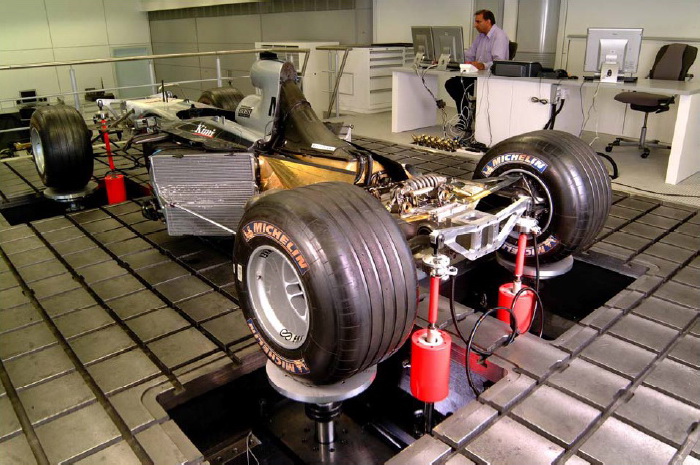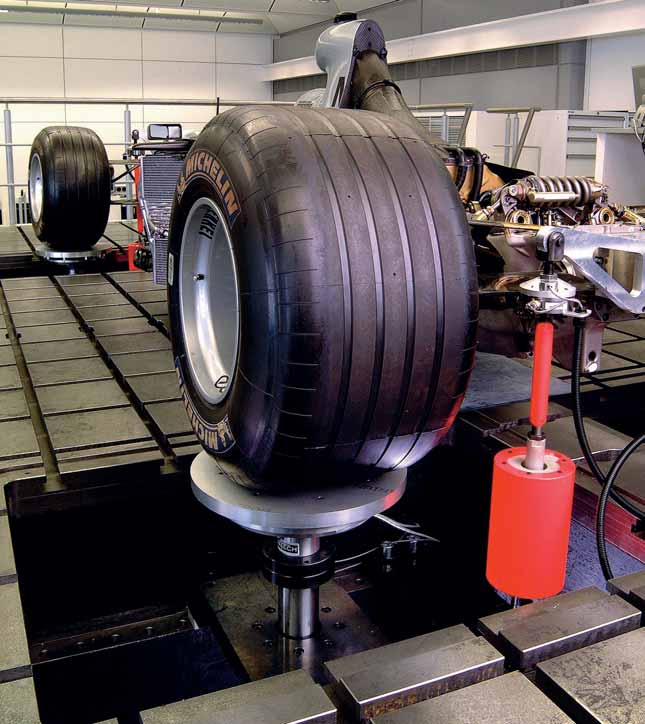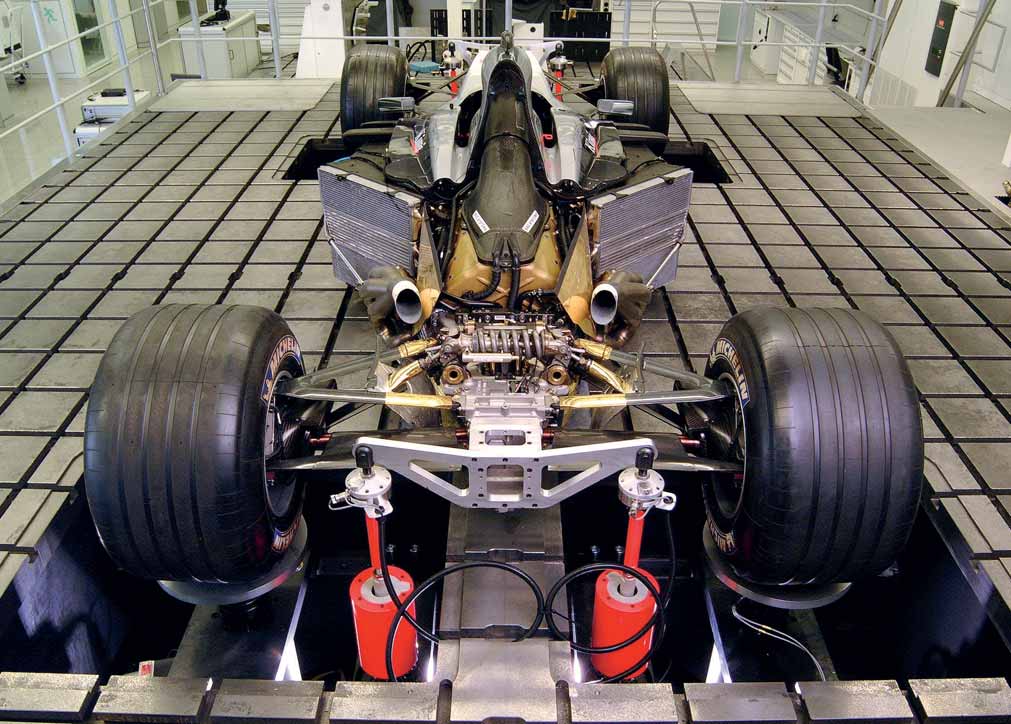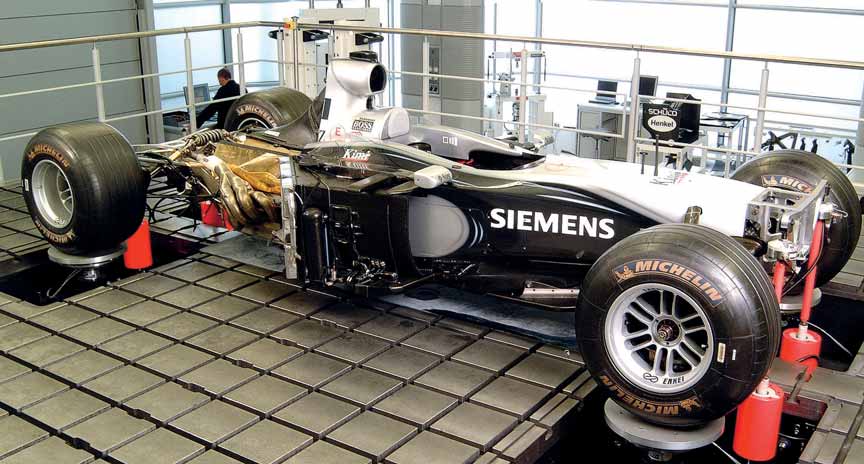PlatinumZealot wrote:That is a good idea.
You would have a frame around the engine to compress, strech, bend and twist it while it is coupled to the gearbox and or directly to the dyno. Anyway i believe that they do have something in place. It is just something new and interesting to me, such a dyno. A stress dyno if you may.
It's referred to as a HIL (hardware in the loop) simulation. It's where the chassis and engine simulation becomes one joined-up thing. McLaren have an 8-post rig in Woking, Honda have
at least one in Sakura (but I'd be surprised if they only had one).
Where this stuff is validated for the F1 2017-18 seasons for McLaren-Honda, I don't know.
I think the chassis guys will be more into this sort of thing, but this post belongs in the engine thread as we're talking about chassis loads potentially causing an engine failure.
Here are some images of the McLaren 8-post rig to give you an idea of how it works: four pads under the wheels/tyres, and four links to the sprung part of the chassis, that pull the chassis downward, simulating downforce. If you imagine the two diagonal chassis links pulling down while the other two chassis links push upward, that's a twisting load on the chassis. At the same time, the four pads under the wheels can move up, down and also left, right and forward/backward (simulating a shock load like a kerb, for example).




AVL make a similar system, but instead of four pads with the wheels on them, they have four dynos, one for each corner, so they can simulate loads coming in from the brakes through the suspension into the chassis (when you stand on the brakes, the torque has to go somewhere: through the suspension links into the chassis/gearbox, and that causes the engine as the stressed member to see bending and torsional loads).
Suffice to say that simulation for this sort of problem exists, and we know that McLaren and Honda both have facilities to test it.







